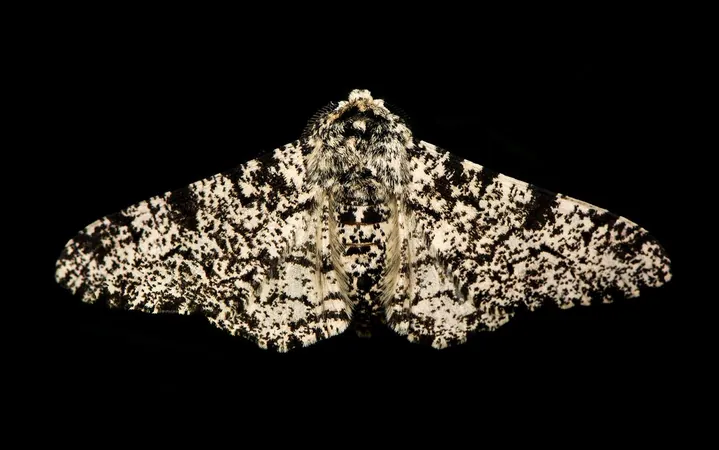
The Great Beanbag Genetics Showdown: A Clash of Evolutionary Titans
2025-04-15
Author: Charlotte
Life is an intricate web of complexity, stretching from microscopic molecules to entire ecosystems. Yet, throughout history, biologists have grappled with how to decode this complexity.
Two Schools of Thought in Evolutionary Biology
In the quest to understand nature, biologists have taken two distinct paths. One school aims to uncover universal principles that tie together diverse forms of life. This approach echoes Darwin's natural selection, which posits that species adapt through variations in traits passed down through generations.
On the other hand, some biologists argue that life cannot be distilled into a set of simple laws. They view each organism as a unique entity, shaped by countless variables, and reject a one-size-fits-all mathematical approach. This perspective highlights the rich complexity of individual cases rather than seeking a universal formula.
The Beanbag Genetics Debate: A Historical Perspective
Sixty years back, a fiery debate, dubbed the 'beanbag genetics' controversy, erupted among evolutionary biologists. At its core, this conflict featured "beanbag geneticists"—who believed in representing evolution through mathematical models—versus their rivals, who criticized this as an oversimplification.
The clash reached a crescendo in 1959, when biologist Ernst Mayr delivered a controversial keynote address at a Darwin centenary event. Mayr provocatively critiqued the beanbag model, which illustrated genetic inheritance as merely swapping colored beans—a representation he deemed tragically simplistic.
Mayr vs. Haldane: A Battle of Ideas
Mayr’s critique focused on how this beanbag illustration could not account for the complex interactions of genes. In essence, he charged that the mathematical models of evolutionary theorists offered little to our understanding of the living world.
Yet, Mayr's attacks soon met with a robust counter from J.B.S. Haldane, a guardian of the beanbag approach. In 1964, Haldane published a spirited defense, arguing that while beanbag genetics may not provide complete insights into physiological intricacies, it does effectively reveal the underlying evolutionary processes.
Reshaping Evolutionary Theory—A Modern Perspective
Fast-forward to today, and the descendants of the beanbag geneticists face new challenges that resonate with Mayr’s initial skepticism. Many contemporary biologists insist that the mathematical frameworks have led to a neglect of other influential evolutionary factors like epigenetics and niche construction.
However, critics of this view suggest there's a fine line between recognizing complexities and undermining established theoretical frameworks. A detailed understanding of the processes behind evolution remains vital, as these principles shape biological diversity.
The Ongoing Importance of Beanbag Genetics
Despite evolving perspectives, the contributions of beanbag genetics to evolutionary theory endure. New mathematical models continue to emerge, adjusted for discoveries in the field, such as the intersection of genetics and epigenetics, which reveal how traits may change in response to environmental shifts.
From elucidating mutations in species to facilitating breakthroughs in agriculture, the beanbag geneticists have provided foundational tools for the understanding of life’s diversity. Without these mathematical perspectives, many concepts that are now core principles may have remained undiscovered.
Conclusion: Bridging Both Worlds
In the realm of evolutionary biology, it’s clear that both views—mathematical models and the complexity of individual cases—are essential for a holistic understanding of life. As science progresses, the dialogue between these perspectives will continue to shape the study of evolution, ultimately enriching our understanding of the natural world.









 Brasil (PT)
Brasil (PT)
 Canada (EN)
Canada (EN)
 Chile (ES)
Chile (ES)
 Česko (CS)
Česko (CS)
 대한민국 (KO)
대한민국 (KO)
 España (ES)
España (ES)
 France (FR)
France (FR)
 Hong Kong (EN)
Hong Kong (EN)
 Italia (IT)
Italia (IT)
 日本 (JA)
日本 (JA)
 Magyarország (HU)
Magyarország (HU)
 Norge (NO)
Norge (NO)
 Polska (PL)
Polska (PL)
 Schweiz (DE)
Schweiz (DE)
 Singapore (EN)
Singapore (EN)
 Sverige (SV)
Sverige (SV)
 Suomi (FI)
Suomi (FI)
 Türkiye (TR)
Türkiye (TR)
 الإمارات العربية المتحدة (AR)
الإمارات العربية المتحدة (AR)